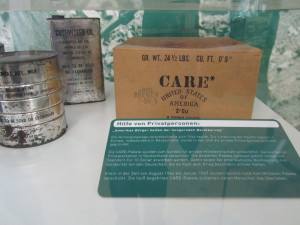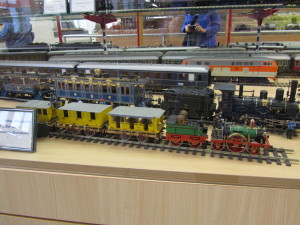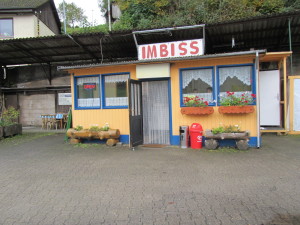Bergen Rain showers in the forecast today encouraged us to stay closer to home and put museums on our to-do list. We headed out to Schramberg-Talstadt to visit the Auto-und Uhrenwelt, a 4000 square meter museum in a former factory dedicated to cars and clocks. The top 4th floor of the museum traced the development of clocks and their technology with clocks and watches from Junghans and the town of Schramberg. Junghans had even crafted running blocks and timers along with photo capability at the finish line in sports activities like running. The first clock we saw had carved wooden gears and rocks for weights, one of the last was a solar watch.
Seroquel tablets The third floor contained bikes, trucks, and exhibits from life in Europe in the post-war years. They even had a CARE package from the United States
that was sent to Schramberg containing powdered milk, powdered eggs, etc. Â We found a vintage hair salon, vignettes set up to represent the average home. The next two floors tracked the development of bikes, cars and trucks during the recovery period after WWII and the subsequent boom times.
Next we visited the miniature train museum across the street. The trains are 2 gauge in Germany (3 in England), the tracks are 2 1/2 inches wide. Each element was handcrafted, and there are no kits to assist in the effort. They had a fairy tale pastel train set up, complete with landscape, houses completely furnished and with lamps and lighting.
Next up was a coal yard and it’s associated trains. The entire middle of the room was taken up with a full scene with villages (a hotel with a bridal party celebrating on the porch), with country scenes (farms, fishing holes, movies being filmed, etc), with mountain scenes complete with rock climbers, and even beach scenes with bathing beauties. Of course, all through these scenes commuter trains rolled along, high speed trains whizzed by, work trains plodded on, old steam engine trains made their way.
Next up was the Autosammlung Steim, the Steim collection of cars tracing the history of the car over the last 100 years. The collection includes over 120 vehicles the Steim family has collected over the last 30 years and has been open to the public since 2007. Gems of the collection were the Maybach DS 8 Zepplin (1932), an Adler Le Mans racing car from 1937, and some sleek new cars.
On our way to Haslach, we stopped at Tina’s Truck Stop
for a bite of lunch – a first for us! In Haslach we visited the Schwarzwalder Trachtenmusem (a museum dedicated to the traditional clothing worn by the residents of the various towns and farms in the Black Forest. The museum is located in a former Capuchin monastery that dates back to the time of the Thirty Years’ Â War.
On our way back to Zell am Harmersbach, the showers ended and we saw blue skies in the west. We learned that Zell am H. was documented to 1139, and the thick town walls are still intact. We strolled its Main Street with its half-timbered buildings, shops, butchers, bakers, even a shop with traditional costumes and lederhosen. We found the Stork Tower, built in 1330. It used to be a jail where prisoners were kept and even has a dungeon. We slipped into the local parish church, and made our way to the other end of town to the Pilgrim Church to find it closed and under reconstruction. Pilgrimages to here go back as far as the crusades when people worshipped “Mary of the Rose.” Legend has it that a smithy was taken prisoner by the Moors and he asked Mary of the Rose to help him. He promised that if she did he would take the chains that shackled him to her shrine. Miraculously he escaped and kept his promise. During the Thirty Years War, the chains were going to be made into horseshoes to try to stop the pilgrimages. While the smithy was preparing to work the chains, they disappeared and were found hanging in the church where they had always been. So now, “Mary of the Rose” is “Mary of the Chains.” Naturally, the number of pilgrims increased.
Then, home to our rental!




